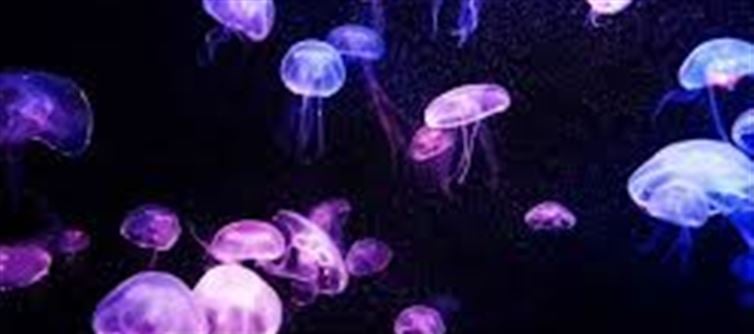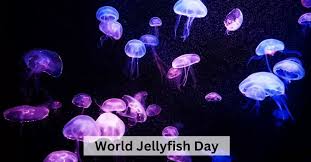
1. What is World Jellyfish Day? 🪼
· Celebrated annually on November 3, this day raises awareness about the ecological importance of jellyfish.
· Focuses on marine conservation, highlighting how jellyfish contribute to ocean biodiversity.
2. Why Jellyfish Matter 🌐
· Food web contribution: Serve as prey for turtles, sunfish, and seabirds.
· Ocean health indicators: population changes can signal shifts in marine ecosystems.
· Medicinal & scientific value: Some species are used in research for bioluminescence and medical studies.
3. Top beautiful Jellyfish Species ✨
1. Moon Jellyfish (Aurelia aurita) – Transparent, glowing disc-shaped bell.
2. Lion’s Mane Jellyfish (Cyanea capillata) – Long, flowing tentacles; largest known jellyfish.
3. Blue Blubber Jellyfish (Catostylus mosaicus) – Vibrant blue with bell-shaped body.
4. Deadliest Jellyfish Species ☠️
1. Box Jellyfish (Chironex fleckeri) – Highly venomous; can cause heart failure.
2. Irukandji Jellyfish – Tiny but deadly; venom triggers severe pain and nausea.
3. Portuguese Man O’ War – Often mistaken for a jellyfish; its tentacles deliver excruciating stings.
5. Threats to Jellyfish Populations ⚠️
· Climate change: Rising ocean temperatures affect breeding and migration.
· Pollution: Plastic waste and chemicals harm delicate jellyfish ecosystems.
· Overfishing: Reduces natural predators, causing imbalances in marine life.
6. How You Can Help 🌱
· Reduce plastic use to prevent ocean pollution.
· Support marine conservation organizations.
· Spread awareness about the importance of jellyfish for healthy oceans.
Disclaimer:
The views and opinions expressed in this article are those of the author and do not necessarily reflect the official policy or position of any agency, organization, employer, or company. All information provided is for general informational purposes only. While every effort has been made to ensure accuracy, we make no representations or warranties of any kind, express or implied, about the completeness, reliability, or suitability of the information contained herein. Readers are advised to verify facts and seek professional advice where necessary. Any reliance placed on such information is strictly at the reader’s own risk.




 click and follow Indiaherald WhatsApp channel
click and follow Indiaherald WhatsApp channel